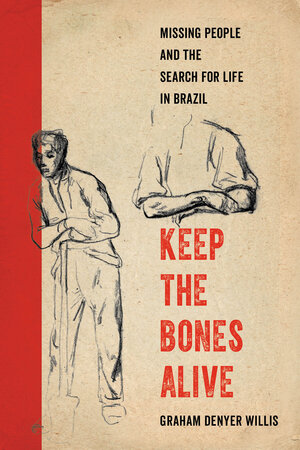By Graham Denyer Willis, author of Keep the Bones Alive: Missing People and the Search for Life in Brazil
What does it mean to disappear, to vanish and never be seen again? Disappearance has long been understood as an explicitly political problem, a question of moonlight military flights over the South Pacific, names spoken by paramilitaries, and of the CIA ‘black sites’ of ‘GWOT’ rendition.
These understandings of disappearance as tied to political violence aren’t wrong. And yet making people vanish has long been a technique of mundane political order, outside of war and crisis, such that one person vanishing without a trace nonetheless leaves shrouds of terror and sorrow for those left behind.
What of those whose absence isn’t borne from crisis? What of the lives that are not known as being absent, or even present, in the first place? Whose absence does not muster a manhunt, demand a spectacular search party, or call for an amber alert?
If disappearance is easily affixed to political terror, it hasn’t been so easily recognized as political in the everyday. It matters. Year after year, 20,000 to 25,000 people are reported missing in São Paulo, Brazil. They’ve vanished. Family members speak of acute absence, of dramatic silence that restructures affective bounds. They gesture with a sorrow that commonly slides toward suicide. They describe the uncertainty with rhetorical questions vested in hope: what if he is out there, walking somewhere, looking for something? Maybe she is just trying to hide from someone?
In São Paulo— which would be the fourth-largest country in Latin America if measured by population— other patterns are often used to describe what surrounds the void left behind by disappearance. Urbanists describe how greater than 60% of the city of São Paulo urbanized informally, rather than with regimentation, redistribution and an attention to life. Thousands of people die on the streets of the city every year, a near majority of whom are buried as indigentes in city cemeteries. Police statistics show that every year, police kill between 700 and 800 people in the city, 75% of whom are young Black men.
São Paulo’s prison population has grown by 2,144% since 1983 − from 9,972 to 233,755. An organized crime group now controls all but seven of the state’s 178 prisons, 28 of which have been built and opened since I first started working on my book, Keep the Bones Alive
Missing People and the Search for Life in Brazil. Journalists have written about at least 35 mass graves discovered around the city since 2007. The Immigration and Customs Enforcement Agency (ICE) of the United States detained 17,000 Brazilians at the El Paso land-border station alone, in 2019.
The most common question that emerges from a disappearance — where did they go? — ties to these statistics about São Paulo. Sometimes these patterns provide the answers — in prison, at the border, in a city cemetery, in a mass grave. Sometimes they don’t.
The question is always and rarely the point. Disappearance is active and passive, individual and systemic, material and social. When the state may have done it, but also probably didn’t do it, and yet is clearly a factor because of its own absence, understanding how disappearance matters requires a more nuanced understanding of what it means to vanish.
Disappearance must be seen as both systemic assumption — people are left to disappear — and event —an act of snatching or rendering. When understood as political violence, only the latter of these two figures as a problem. The former, by contrast, is easily cast as a problem of personal responsibility and bad life choices — concerning those who couldn’t pay up or ‘had it coming.’
Disappearance of both kinds destroys, creates, and inspires in the social worlds that it impacts, with clear and distinctive political consequences. The favela and its parallels —collective, social and a refusal to fade away is an act against disappearance as systemic assumption, making the city itself a product of disappearance logics and their dialectics. From and against disappearance as event, much continues to rise and organize, in this city and far beyond.
